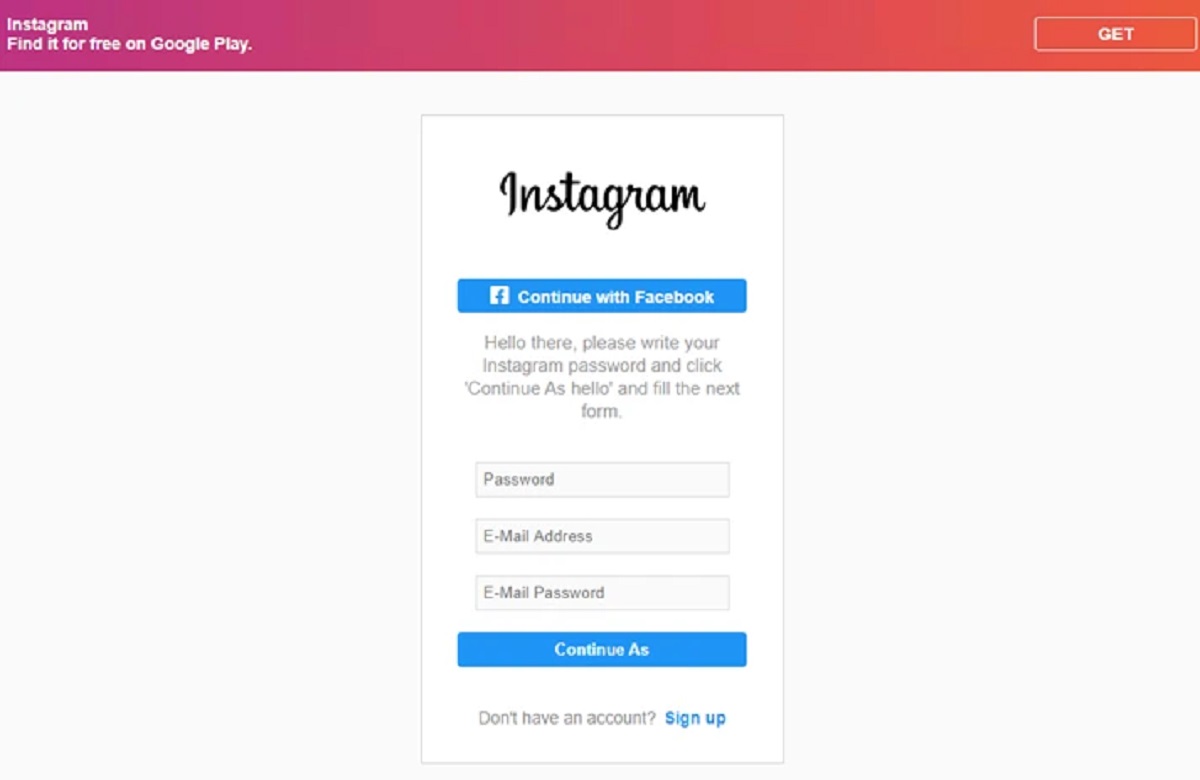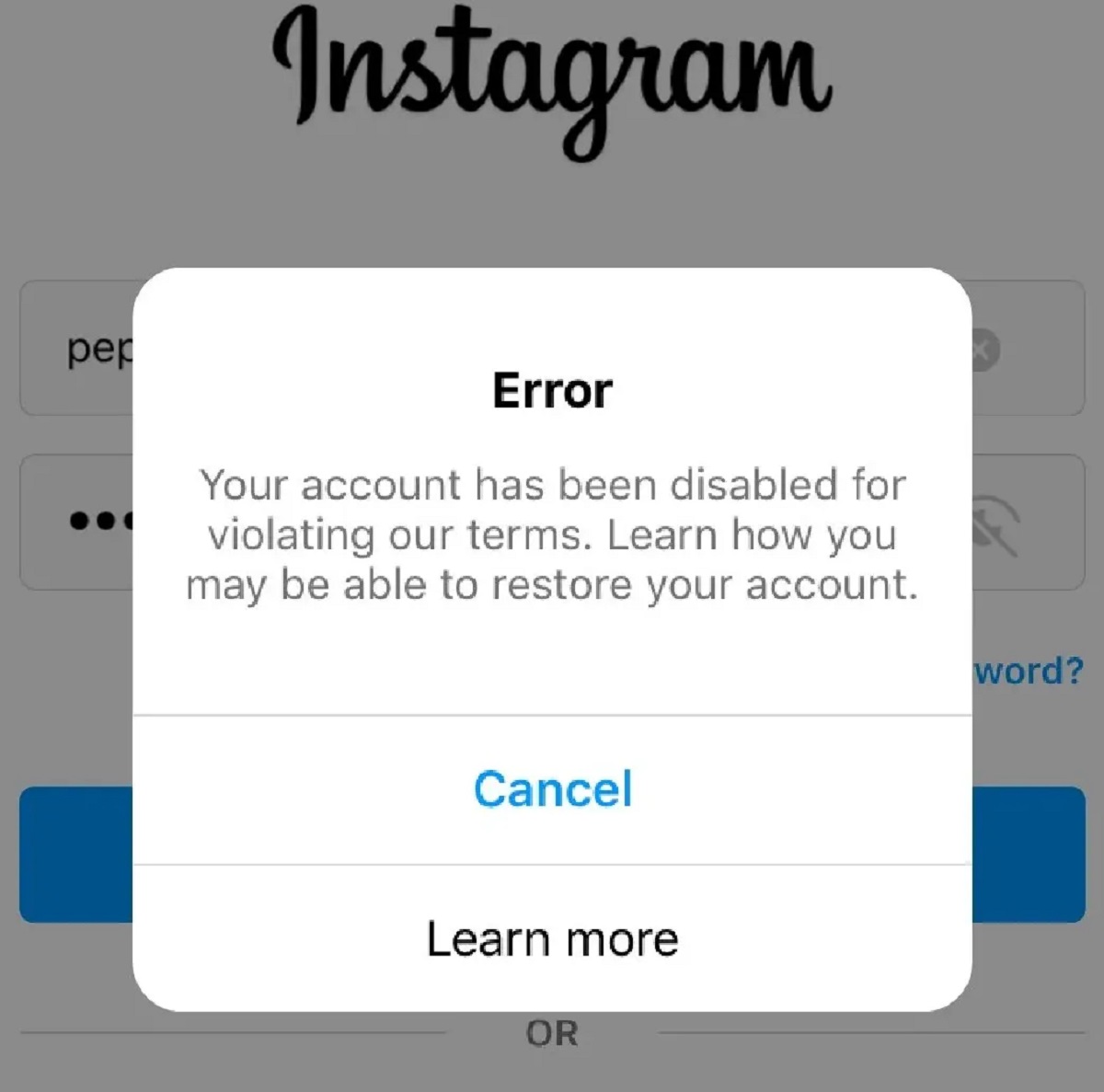Introduction
In today’s digital age, email has become an integral part of our personal and professional lives. It allows us to communicate, share important information, and conduct business transactions with a click of a button. However, the ease and convenience of email also make it a prime target for malicious individuals seeking unauthorized access to sensitive information.
Understanding the potential risks of email hacking is crucial for both individuals and organizations. By learning about the various methods employed by hackers, we can take proactive measures to safeguard our email accounts and prevent unauthorized access.
This article will explore the different techniques used by hackers to gain access to someone’s email account. It is important to note that the purpose of this article is to raise awareness about the risks associated with email hacking and educate readers on how to protect themselves, not to encourage or promote illegal activities.
By understanding the techniques employed by hackers, we can reinforce our email security measures and reduce the likelihood of falling victim to such attacks. From social engineering to phishing techniques, we will delve into the tactics hackers use to breach email accounts.
Additionally, we will also discuss the importance of implementing strong password practices, utilizing two-factor authentication, and remaining vigilant against suspicious emails or activities.
The objective of this article is to empower readers with the knowledge and awareness necessary to protect their email accounts from hacking attempts. By implementing the recommended security measures and exercising caution while dealing with emails, individuals and organizations can ensure the integrity and privacy of their communications.
Now, let’s explore the various methods employed by hackers and understand how we can safeguard our personal and professional email accounts.
Understanding the Risks
When it comes to email hacking, it is essential to have a clear understanding of the potential risks involved. By familiarizing ourselves with the dangers that lurk in the digital world, we can better appreciate the importance of safeguarding our email accounts.
One of the most significant risks associated with email hacking is unauthorized access to sensitive information. Hackers can gain access to our emails and extract personal or financial data, such as credit card numbers, social security numbers, or login credentials. This information can then be used for identity theft, financial fraud, or even corporate espionage.
In addition to the financial impacts, email hacking can also have severe reputational consequences. Once a hacker gains control of an email account, they can send out malicious emails or phishing scams to the victim’s contacts. This can damage relationships, tarnish one’s professional image, and even lead to legal ramifications.
Furthermore, a compromised email account can serve as a gateway to other online platforms and services that are linked to it. With access to your email, hackers can reset passwords, gain control of social media accounts, or even intercept sensitive communication from various online services.
Understanding that email hacking is a real threat is the first step towards protecting ourselves from potential cyber attacks. By being aware of the risks, we can take proactive measures to strengthen our email security and mitigate the chances of falling victim to such attacks.
In the upcoming sections, we will explore various techniques employed by hackers to breach email accounts. By understanding these methods, we will be better equipped to identify potential vulnerabilities and take appropriate action to secure our email accounts.
Gathering Information about the Target
Before hackers can attempt to breach an email account, they often gather information about their target. This step is crucial as it helps them devise personalized and convincing attack strategies. Let’s explore the different methods hackers employ to collect information about their targets.
Social Media: Social media platforms have become a goldmine of personal information. Hackers scour these platforms to gather details such as full name, birthdate, location, relationships, and even pet names. This information can be used to guess passwords or answer security questions to gain unauthorized access to email accounts.
Online Presence: Hackers also search for any public information available online, such as personal websites, blogs, or online profiles on community forums. These sources can provide valuable insights into a person’s interests, activities, and even potential usernames or passwords.
Data Breaches: In recent years, numerous high-profile data breaches have occurred, resulting in the exposure of millions of user accounts. Hackers can exploit this leaked data to gather information about potential targets and use it in their hacking attempts. It is essential to stay informed about data breaches and change passwords regularly.
Public Records: Hackers can also access public records, such as property records, court documents, or voting records, to gather further information about their targets. This information can aid them in social engineering attacks or even password guessing attempts.
Phishing Surveys: Another technique hackers employ is sending out phishing surveys masquerading as legitimate organizations or entities. These surveys often request personal information under the guise of market research or reward programs. Unwary individuals may unknowingly provide sensitive details that can be used in hacking attempts.
It is crucial to be mindful of the information we share online and the privacy settings on our social media accounts. By minimizing the personal information available to the public, we can reduce the risk of being targeted by hackers.
In the next sections, we will explore the various hacking techniques employed by hackers and the countermeasures we can implement to protect our email accounts.
Using Social Engineering Techniques
Social engineering is a psychological manipulation tactic that hackers use to deceive and manipulate individuals into revealing sensitive information or performing actions that can compromise their email accounts. Let’s explore some common social engineering techniques employed by hackers.
Phishing: Phishing is one of the most prevalent forms of social engineering. Attackers send deceptive emails that appear to be from a reputable source, such as a bank or a well-known company. These emails often contain urgent requests for personal information or login credentials. Unsuspecting individuals who fall for the bait unknowingly provide their information, granting cybercriminals access to their email accounts.
Pretexting: Pretexting involves creating a fictional scenario to deceive the target and gain their trust. Attackers may pose as someone in a position of authority, like a bank representative or an IT technician, to extract sensitive information. By exploiting the target’s trust in the assumed identity, attackers manipulate them into revealing their email login credentials.
Baiting: Baiting entices individuals with the promise of something desirable, such as free software downloads or exclusive content. These offerings often hide malware or keyloggers that collect information as the unsuspecting user engages with the bait. Once installed, the malware can gather login credentials or hijack the email account without the user’s knowledge.
Quid Pro Quo: In quid pro quo attacks, hackers offer something of value in exchange for access to the victim’s email account. For example, they may claim to be conducting a survey or offering a reward in exchange for the target’s login credentials. Unwitting individuals who provide their credentials unknowingly allow hackers to gain unauthorized access to their email accounts.
Counteracting social engineering attacks requires a cautious approach. Be wary of unsolicited emails requesting personal information or login credentials, especially if they appear urgent or offer rewards. Instead of clicking on links provided in emails, access websites directly through your browser by typing in the URL to ensure safety.
Educating yourself and staying vigilant against social engineering tactics is essential to avoid falling victim to such attacks. Remember, hackers prey on the trust and vulnerabilities of individuals, so remaining skeptical and verifying the authenticity of any requests for personal information is key to protecting your email account.
In the following sections, we will explore other hacking techniques and the measures we can take to secure our email accounts against them.
Password Cracking & Brute Force Attacks
Password cracking and brute force attacks are common hacking techniques used to gain unauthorized access to email accounts by discovering or guessing the account’s password. Let’s explore how hackers employ these methods and what proactive steps we can take to protect our email accounts.
Password Cracking: Hackers use various techniques to crack passwords. They may use sophisticated software that utilizes algorithms and dictionaries to systematically guess a password. Additionally, hackers can exploit vulnerabilities in weakly encrypted passwords or use stolen password databases to crack login credentials.
Brute Force Attacks: Brute force attacks involve systematically trying every possible combination of characters until the correct password is discovered. These attacks are time-consuming, but hackers with powerful computing resources can execute them. By using automated tools, hackers attempt to crack passwords by trying millions of combinations in a short amount of time.
To protect our email accounts from password cracking and brute force attacks, it is essential to follow password best practices:
- Choose a strong password: Create a password that is unique, complex, and difficult to guess. It should include a combination of uppercase and lowercase letters, numbers, and special characters.
- Use a password manager: Utilize a trustworthy password manager to generate and store strong passwords for each of your online accounts. This ensures that you have unique passwords for each account without the need to remember them all.
- Enable multi-factor authentication (MFA): Enable MFA whenever possible. This adds an extra layer of security by requiring a secondary form of verification, such as a code sent to your mobile device, in addition to the password.
- Regularly update passwords: Change your passwords regularly, especially when there is a suspicion of a data breach or if any unusual activity is detected.
- Avoid common passwords: Avoid using easily guessable passwords, such as “password” or “123456.” These are often the first ones hackers try.
By following these best practices and implementing strong password security measures, we can significantly reduce the risk of our email accounts being compromised via password cracking or brute force attacks.
In the next sections, we will discuss other hacking techniques and the precautions we can take to safeguard our email accounts.
Phishing Attacks
Phishing attacks are a widespread and deceptive technique used by hackers to trick individuals into divulging their login credentials or other sensitive information. Understanding how phishing attacks work and how to recognize them is crucial in protecting our email accounts. Let’s dive deeper into this hacking method.
Phishing attacks typically involve the following steps:
- Email Spoofing: Hackers use various methods to make their emails appear as though they come from a trusted source, such as a reputable company or a known individual. They often use techniques like email spoofing to manipulate the “From” field, making it seem like the email is legitimate.
- Social Engineering Tactics: Phishing emails are crafted to manipulate the recipient’s emotions or exploit their sense of urgency. They may claim that there is an issue with the recipient’s account, or they offer a tempting reward to entice the person into taking immediate action.
- Deceptive Links or Attachments: Phishing emails often contain links or attachments that, when clicked or opened, lead to malicious websites or download malware onto the victim’s device. These websites may mimic legitimate login pages to trick individuals into entering their credentials, which are then captured by the hackers.
- Redirecting to Fake Login Pages: In some cases, clicking on a link in a phishing email may lead to a fake login page that closely resembles the legitimate website. Unsuspecting individuals may enter their login credentials, unknowingly providing hackers with access to their email accounts.
- Data Harvesting: Once the hackers obtain the victims’ login credentials, they can access their email accounts, potentially gaining control over sensitive information or using the compromised account for further phishing attacks.
To protect ourselves from phishing attacks, it is essential to practice the following precautions:
- Be cautious of email senders: Double-check the email sender’s address to ensure it is legitimate. Pay attention to any minor alterations or misspellings in the email address.
- Verify the email content: Examine email content for signs of urgency or suspicious requests for personal information. Legitimate organizations typically do not request sensitive information via email.
- Avoid clicking on suspicious links: Hover over links to see the actual web address before clicking on them. Be wary of URLs that seem unusual or take you to non-secure websites.
- Stay updated: Keep your web browser, email client, and security software up to date to benefit from the latest security patches and protections against phishing attempts.
- Report phishing attempts: If you receive a phishing email, report it to your email provider or the appropriate organization to help prevent others from falling victim.
By staying vigilant and following these precautions, we can effectively protect ourselves from falling victim to phishing attacks and safeguard our email accounts.
In the upcoming sections, we will explore other hacking techniques and the measures we can take to secure our email accounts from these threats.
Man-in-the-Middle Attacks
Man-in-the-Middle (MitM) attacks are a form of cyber attack where hackers intercept communication between two parties without their knowledge. In the context of email, MitM attacks can compromise the security and privacy of email exchanges. Let’s delve into how MitM attacks work and what steps we can take to protect our email accounts.
In a typical MitM attack, the hacker positions themselves between the sender and the recipient of the email. They intercept and manipulate the communication, giving them unauthorized access to the email content or even the ability to modify the message.
Here’s an overview of how a MitM attack on email can occur:
- Interception: The hacker gains access to the target’s network or utilizes techniques like session hijacking or DNS spoofing to intercept the email communication.
- Impersonation: Once the hacker intercepts the email traffic, they may impersonate one of the parties involved, making it difficult to detect their presence.
- eavesDropping: The hacker can monitor the email content, making copies of messages, attachments, and any sensitive information transmitted.
- Modification: In some cases, the hacker can modify the content of the email, inserting malicious links or attachments to redirect the user to a compromised website or to execute malware.
To protect ourselves from MitM attacks on our email accounts, we should consider implementing the following measures:
- Using Secure email protocols: Whenever possible, use secure email protocols such as Secure Sockets Layer (SSL) or Transport Layer Security (TLS) to encrypt email communication and protect it from interception.
- Verify SSL certificates: When accessing webmail or any email service over a web browser, ensure that the SSL certificate is valid and matches the website domain. This confirms the authenticity of the server and helps protect against MitM attacks.
- Avoid public Wi-Fi networks: Refrain from accessing your email on public Wi-Fi networks, as they can be vulnerable to MitM attacks. If you must use public Wi-Fi, consider using a trusted VPN service to encrypt your connection.
- Use digital signatures and encryption: Digital signatures add an extra layer of security by verifying the authenticity of the email sender. Encryption protects the content of the email from being intercepted and read by unauthorized individuals.
- Be cautious of email attachments and links: Exercise caution when opening email attachments or clicking on links, as they may lead to compromised websites or the execution of malware.
By implementing these security measures, we can reduce the risk of falling victim to MitM attacks and safeguard the privacy and integrity of our email communications.
In the following sections, we will explore other hacking techniques and the precautions we can take to protect our email accounts against such threats.
Keyloggers and Spyware
Keyloggers and spyware are types of malware designed to secretly monitor and record a user’s keystrokes and activities on their device. These malicious programs are often used by hackers to steal login credentials, including those used for email accounts. Let’s explore keyloggers and spyware and how we can protect our email accounts from them.
Keyloggers are software or hardware-based tools that capture every keystroke entered on a compromised device. This allows hackers to collect sensitive information, such as passwords and login credentials, without the user’s knowledge.
Spyware, on the other hand, is a type of malware that collects information about a user’s online activities, including browsing habits, login credentials, and personal data. This information is then transmitted to the hacker, who can use it for malicious purposes.
To protect ourselves from keyloggers and spyware attacks on our email accounts, it is crucial to take the following precautions:
- Use reputable antivirus software: Install and regularly update reputable antivirus software that offers real-time protection against various types of malware, including keyloggers and spyware.
- Update your operating system and applications: Keep your operating system and applications up to date to ensure you have the latest security patches and fixes that can help prevent malware infections.
- Be cautious of downloading unknown software: Avoid downloading software from untrusted sources, as they may contain hidden keyloggers or spyware. Stick to official app stores or trusted websites for your software needs.
- Avoid clicking on suspicious links or attachments: Be cautious when clicking on links or opening email attachments, especially if they are unexpected or come from unknown sources. These could potentially contain malicious code that installs keyloggers or spyware.
- Regularly scan your device for malware: Perform regular scans of your device using reputable antivirus software to detect and remove any malware, including keyloggers and spyware.
In addition to these precautions, it is essential to practice good browsing habits by being cautious of phishing websites and maintaining strong and unique passwords for all your online accounts, including your email account.
By being proactive in protecting our devices and following these security measures, we can minimize the risk of keyloggers and spyware compromising our email accounts and ensure the privacy and security of our communications.
In the upcoming sections, we will explore other hacking techniques and the measures we can take to secure our email accounts from these threats.
Email Spoofing & Fake Login Pages
Email spoofing and fake login pages are tactics commonly used by hackers to deceive individuals into revealing their login credentials or personal information. By understanding how email spoofing and fake login pages work, we can better protect ourselves from falling victim to such attacks.
Email spoofing is the practice of forging the sender’s address in an email to make it appear as if it is coming from a trusted source. Hackers use this technique to trick recipients into believing that the email is legitimate and from a reputable organization or individual.
By spoofing the sender’s address, hackers can design emails that mimic official communication from trusted entities, such as banks, social media platforms, or popular websites. These emails often include urgent requests for account information, password resets, or other actions that require the recipient to divulge sensitive information.
Another variant of email spoofing involves directing the recipient to a fake login page. The email may contain a link that leads to a counterfeit webpage designed to look identical to the legitimate login page of a popular service, such as an email provider or an online banking platform.
Unsuspecting individuals who enter their login credentials on these fake login pages unknowingly provide hackers with their username and password. With this information, the hackers gain unauthorized access to the victims’ email accounts, potentially compromising other accounts linked to the email or conducting further malicious activities.
To protect ourselves from email spoofing and fake login page attacks and ensure the security of our email accounts, it is important to take the following precautions:
- Check email senders: Scrutinize the email sender’s address to detect any misspellings, suspicious domain names, or inconsistencies that may indicate a spoofed email.
- Verify email content: Pay close attention to the content of the email for any signs of phishing, such as urgent requests for personal information or spelling and grammatical errors.
- Manually enter login URLs: Instead of clicking on links provided in emails, manually type the legitimate URL of the login page into your browser to ensure you are accessing the authentic website.
- Enable two-factor authentication (2FA): Implement 2FA whenever possible to provide an extra layer of security. This requires a secondary form of verification, such as a unique code sent to your phone, in addition to the password.
- Use a password manager: Employ a trusted password manager to generate and store strong, unique passwords for each of your online accounts, including email. This can mitigate the risk of using the same password across multiple accounts.
By adopting these preventative measures, we can minimize the risk of falling victim to email spoofing and fake login page attacks and safeguard our email accounts from unauthorized access.
In the following sections, we will explore additional hacking techniques and the precautions we can take to protect our email accounts against these threats.
Two-Factor Authentication Bypass
Two-Factor Authentication (2FA) is an effective security measure that adds an extra layer of protection to our email accounts. However, it is essential to be aware that there are techniques that hackers can use to bypass this added security. By understanding these bypass methods, we can take necessary precautions to further secure our email accounts.
One common method used to bypass 2FA is SIM swapping. This technique involves tricking the mobile service provider into porting a victim’s phone number to a new SIM card controlled by the hacker. By gaining control of the victim’s phone number, the hacker can intercept the 2FA code sent via SMS and gain unauthorized access to the victim’s email account.
Another method is phishing attacks specifically targeted at obtaining the authentication code. Hackers send convincing phishing emails or messages to trick the victim into disclosing their login credentials and the 2FA code. Additionally, attackers may create fake login pages that capture not only the login credentials but also the 2FA code entered by the victim.
Malware is another means by which hackers can attempt to bypass 2FA. If a victim’s device is infected with malware, it can intercept the 2FA code entered by the user, sending it directly to the hacker without the victim’s knowledge.
To protect our email accounts from 2FA bypass techniques, it is crucial to implement the following precautions:
- Use alternative 2FA methods: Instead of relying solely on SMS-based 2FA, consider using more secure methods such as time-based one-time passwords (TOTP) generated by authenticator apps like Google Authenticator or Authy.
- Enable additional security layers: Some email providers offer additional security options, such as app-specific passwords or biometric authentication, which can further secure your account.
- Be cautious of phishing attempts: Be vigilant against phishing emails and messages that attempt to trick you into disclosing your login credentials and 2FA codes. Pay attention to the email sender’s address, content, and any suspicious links or attachments.
- Regularly update your devices and software: Keep your devices and software up to date with the latest security patches to reduce the risk of malware infections that could potentially bypass 2FA.
- Monitor your accounts: Regularly review your account activity and be vigilant for any signs of unauthorized access. Report any suspicious activity to your email provider immediately.
By implementing these precautions and staying informed about evolving hacking techniques, we can enhance the security of our email accounts and minimize the risk of 2FA bypass attempts.
In the following sections, we will explore additional hacking techniques and the measures we can take to secure our email accounts from these threats.
Protecting Your Email Account
Safeguarding your email account is crucial to maintain the security and privacy of your personal and professional communications. By implementing robust security measures and adopting good security practices, you can significantly reduce the risk of unauthorized access or compromise. Let’s explore some essential steps to protect your email account.
1. Strong and Unique Passwords: Choose a strong, complex, and unique password for your email account. Avoid using easily guessable information like birthdates or common words. Consider using a password manager to generate and store strong passwords for all your accounts.
2. Multi-Factor Authentication (MFA): Enable MFA or two-factor authentication whenever available. Adding an extra layer of verification, such as a unique code sent to your mobile device or generated by an authenticator app, further secures your email account.
3. Regularly Update and Secure Your Devices: Keep your devices, including computers, smartphones, and tablets, up to date with the latest operating system and security patches. Install reputable antivirus software and enable regular automatic updates.
4. Be Wary of Phishing Attempts: Exercise caution when receiving emails or messages requesting personal information or login credentials. Double-check the sender’s email address and be cautious of clicking on suspicious links or opening attachments. Verify the legitimacy of the email before taking any action.
5. Secure Your Wi-Fi and Network: Use a strong and secure Wi-Fi password to prevent unauthorized access to your network. Avoid connecting to public Wi-Fi networks when accessing your email account to reduce the risk of interception or snooping.
6. Regularly Monitor Account Activity: Be proactive in monitoring your email account for any unusual activity or unauthorized access. Regularly review your account settings, email forwarding rules, and recent login activity. If you spot any suspicious activity, report it to your email provider immediately.
7. Encrypt Sensitive Emails and Attachments: When sending sensitive information via email, consider encrypting the content or using a secure file-sharing service. This ensures that only the intended recipient can access the information.
8. Be Mindful of Third-Party Apps and Services: Be cautious when granting access to third-party apps and services that require access to your email account. Only provide access to trusted and reputable applications, and regularly review and revoke access for apps you no longer use.
Remember, maintaining the security of your email account is an ongoing process. Stay up to date with the latest security practices and educate yourself about emerging threats. By being proactive and implementing these measures, you can protect your email account and maintain the confidentiality and security of your communications.
In the upcoming sections, we will explore other hacking techniques and the measures we can take to secure our email accounts from these threats.
Conclusion
Ensuring the security of our email accounts is of utmost importance in today’s digital landscape. Hackers and cybercriminals employ various techniques to gain unauthorized access to our email accounts, putting our personal and professional information at risk. By understanding these hacking techniques and implementing the recommended measures, we can protect our email accounts and maintain the confidentiality and integrity of our communications.
In this article, we explored several hacking techniques, including email spoofing, phishing attacks, keyloggers, and more. We discussed the importance of strong and unique passwords, the benefits of multi-factor authentication, and the need to stay vigilant against suspicious emails and activities. Additionally, we highlighted the significance of keeping our devices and software up to date, practicing good browsing habits, and securing our Wi-Fi networks.
By implementing these security measures, we can significantly reduce the risk of falling victim to hacking attempts. Regularly monitoring our email accounts, being cautious of phishing attempts, and encrypting sensitive information further enhance our email security.
Remember, email security is an ongoing effort. It is important to stay informed about new hacking techniques and evolving cybersecurity threats. Keeping up with the latest security practices and implementing recommended measures will help us stay one step ahead of hackers and protect our email accounts.
By prioritizing our email account security, we can safeguard our personal information, protect our professional connections, and maintain the trust of others. Let’s take the necessary steps to secure our email accounts and ensure a safe and secure digital communication experience.

























